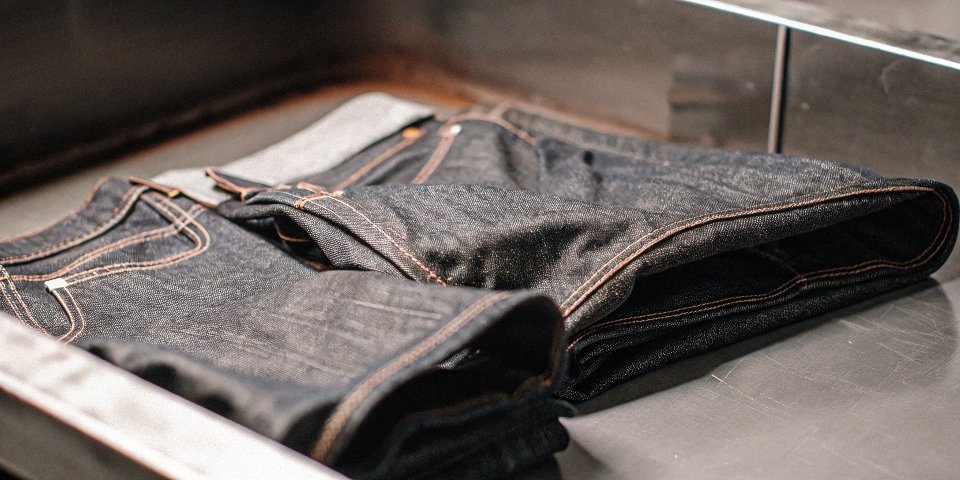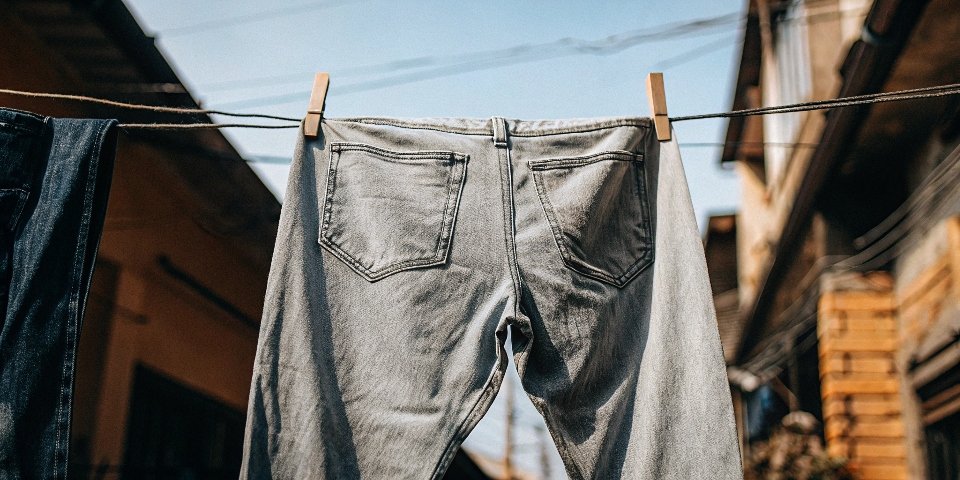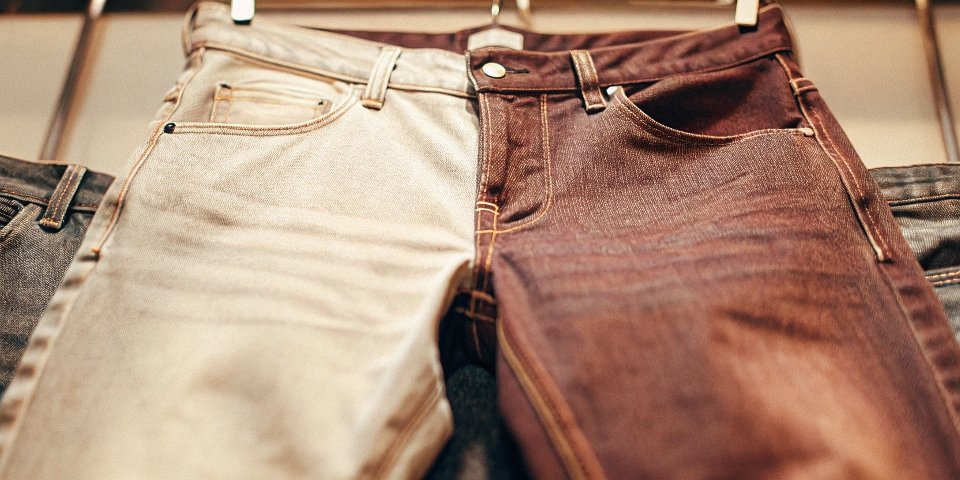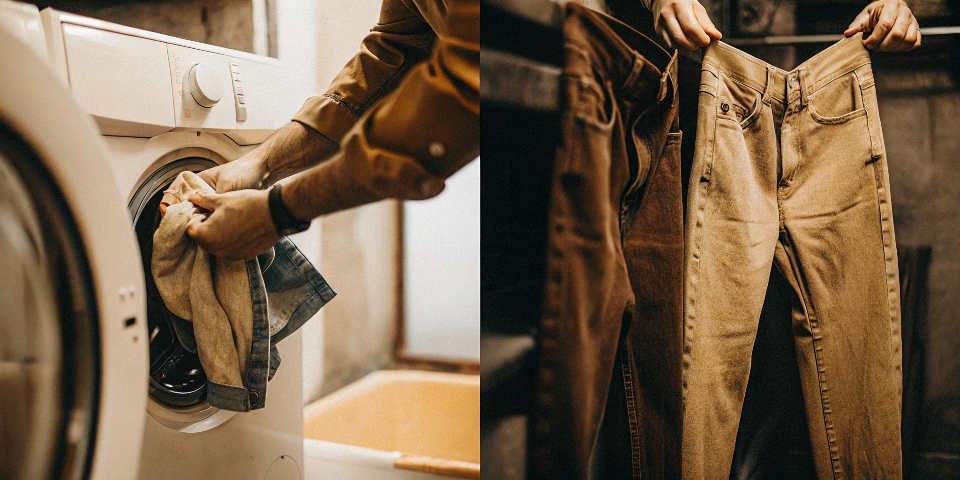You buy the perfect pair of jeans, but after a few washes, they look faded, worn, and nothing like the pair you fell in love with. You dread laundry day.
The best way to wash jeans is to turn them inside out, use cold water under 30°C on a gentle cycle, and always hang them to dry. Avoiding the machine dryer is the most important step to making them last.
As the founder of DiZNEW, I've spent over 20 years mastering denim creation. But all that work can be undone by one bad wash cycle. Improper washing is the number one reason high-quality jeans die an early death.
For designers like Dean, who put so much thought into the fabric and fit, how the customer cares for the garment is crucial. The good news is that the correct method is simple. It just requires a little care.
How to wash jeans to make them last longer?
Your favorite jeans seem to get thinner and weaker with every wash. You wish you could preserve that durable, fresh-from-the-store feeling for years, not just months.
Wash them as little as possible. When you must, turn them inside out, wash in cold water, and always hang them to dry. The heat from a machine dryer is the biggest enemy of denim's lifespan.
In my experience, the secret to longevity is to treat washing as a last resort, not a regular routine. Here at the factory, we see how durable denim fabric1 is, but we also know its weaknesses. The entire washing process is, in effect, controlled damage. Every cycle wears down the cotton fibers.
My essential advice is this: wash with clear, cold water2 at a temperature that does not exceed 30 degrees Celsius. After washing, do not put them in a dryer. Hang them to dry directly. This will make your jeans much more durable.
Heat is the ultimate enemy. Hot water causes the cotton fibers to shrink and weaken. The intense heat of a tumble dryer essentially cooks the fibers, making them brittle and prone to tearing. It also destroys any elastane (stretch material) woven into the fabric, permanently ruining the fit and recovery of the jeans.
How to wash denim so it doesn't fade?
You bought a beautiful pair of dark, raw denim jeans. After one wash, they look blotchy and faded, losing the rich, deep color you wanted to preserve.
To prevent fading, turn your jeans inside out before they touch water. Wash them in cold water with a gentle, color-safe detergent and wash them as infrequently as possible to protect the indigo dye.
Indigo, the dye used for blue jeans, is special. Unlike other dyes that penetrate the yarn, indigo3 sits on the surface. This is why jeans fade so beautifully, but it also means the color can be stripped away easily.
Turning jeans inside out is the most important step you can take. It protects the outer surface, which is the side you see, from the friction of the machine drum. Another key is to use cold water and a small amount of a very gentle soap, preferably one made for dark clothes.
Avoid regular detergents with "optical brighteners" or any form of bleach. For true denim purists, the best method is to not wash them at all for as long as possible. My notes have a tip for this group: you can put your worn jeans in a bag and store them in the freezer.
This is a common practice for people "raising" their jeans to get sharp fades. While it won't truly clean them, it can kill some odor-causing bacteria and let you delay that first crucial wash.
How to wash denim jeans correctly?
You have a set of rules you try to follow, but your jeans still come out stiff or shrunken. You just want a simple, correct, step-by-step process that works every time.
The correct process is simple: empty the pockets, zip the fly, and turn them inside out. Machine wash them alone on a gentle cycle with cold water. When finished, immediately hang them up to air dry.
Over the years, I've perfected a simple, foolproof method. Here is the exact process we recommend to all our clients.
The Correct Washing Protocol
- Prepare the Jeans: First, check all the pockets and remove everything. Then, zip up the zipper and fasten the top button. This simple step prevents the metal hardware from snagging or scratching the fabric during the wash.
- Turn Them Inside Out: This is the golden rule. It protects the color of your jeans and minimizes wear on the visible surface.
- Load the Washing Machine4: It is best to wash your jeans by themselves, or with only a few other pairs of dark jeans. Do not overcrowd the machine. This allows the jeans to move freely, get a better clean, and reduces harsh friction.
- Set the Machine: Choose the most delicate or gentle cycle5 your machine offers. Always use the cold water setting. Add just a small amount of gentle, color-safe detergent. You need less than you think.
- Hang to Dry: As soon as the cycle finishes, take the jeans out to prevent deep wrinkles from setting in. Give them a good shake, pull the seams straight, and smooth them out with your hands.Hang them by the waistband on a drying rack or a clothesline, away from direct sunlight, which can also cause fading.
Is it better to hand wash or machine wash denim?
You've heard that washing machines ruin good denim. But the idea of hand washing a heavy pair of jeans in your bathtub sounds like a huge and messy chore.
Hand washing is gentler and better for preserving the character of new, raw denim. However, a modern machine on a cold, gentle cycle is perfectly fine for most jeans and is much more convenient.
The best method really depends on the jeans and your goals. Both methods are valid if done correctly.
The Case for Hand Washing6
Hand washing gives you total control. It is the gentlest way to clean denim and is the preferred method for the very first wash of a pair of raw denim jeans.
You can soak them without any of the harsh tumbling of a machine, which minimizes the loss of indigo and helps prevent unwanted creases or fading. It’s more work, but for an expensive or special pair of jeans, it’s the safest option.
The Case for Machine Washing
Let's be realistic: machine washing is practical. For 99% of the jeans out there, especially pairs that are already pre-washed, a machine is perfectly fine.
The key is to follow the rules we discussed: inside out, cold water, gentle cycle. The bad reputation of machine washing comes from people using hot water and high-heat dryers, which is a guaranteed way to ruin denim.
For everyday cleaning, a gentle machine wash is effective and saves a lot of time and effort.
| Method | Best For | Pros | Cons |
|---|---|---|---|
| Hand Washing | New Raw Denim, Expensive/Delicate Jeans | Maximum gentleness, preserves color & fabric | Time-consuming, messy, difficult to rinse |
| Machine Washing7 | Most Pre-Washed Jeans, Convenience | Fast, easy, effective cleaning | Can cause damage if not done correctly |
Conclusion
To make your jeans last, wash them correctly: turn them inside out, use cold water, and always hang them to dry. This simple habit keeps your favorite denim looking great for years.
-
Explore the advantages of durable denim fabric to understand its longevity and care requirements. ↩
-
Learn why washing denim with clear, cold water is crucial for maintaining its quality and extending its lifespan. ↩
-
Understanding indigo dye will enhance your appreciation for denim and its unique fading process. ↩
-
Discover expert tips on washing jeans effectively to maintain their color and quality. ↩
-
Learn why a gentle cycle is crucial for preserving the fabric and longevity of your jeans. ↩
-
Explore the benefits of hand washing jeans to understand how it preserves color and fabric, especially for delicate pairs. ↩
-
Learn the best practices for machine washing jeans to avoid damage and ensure effective cleaning. ↩










